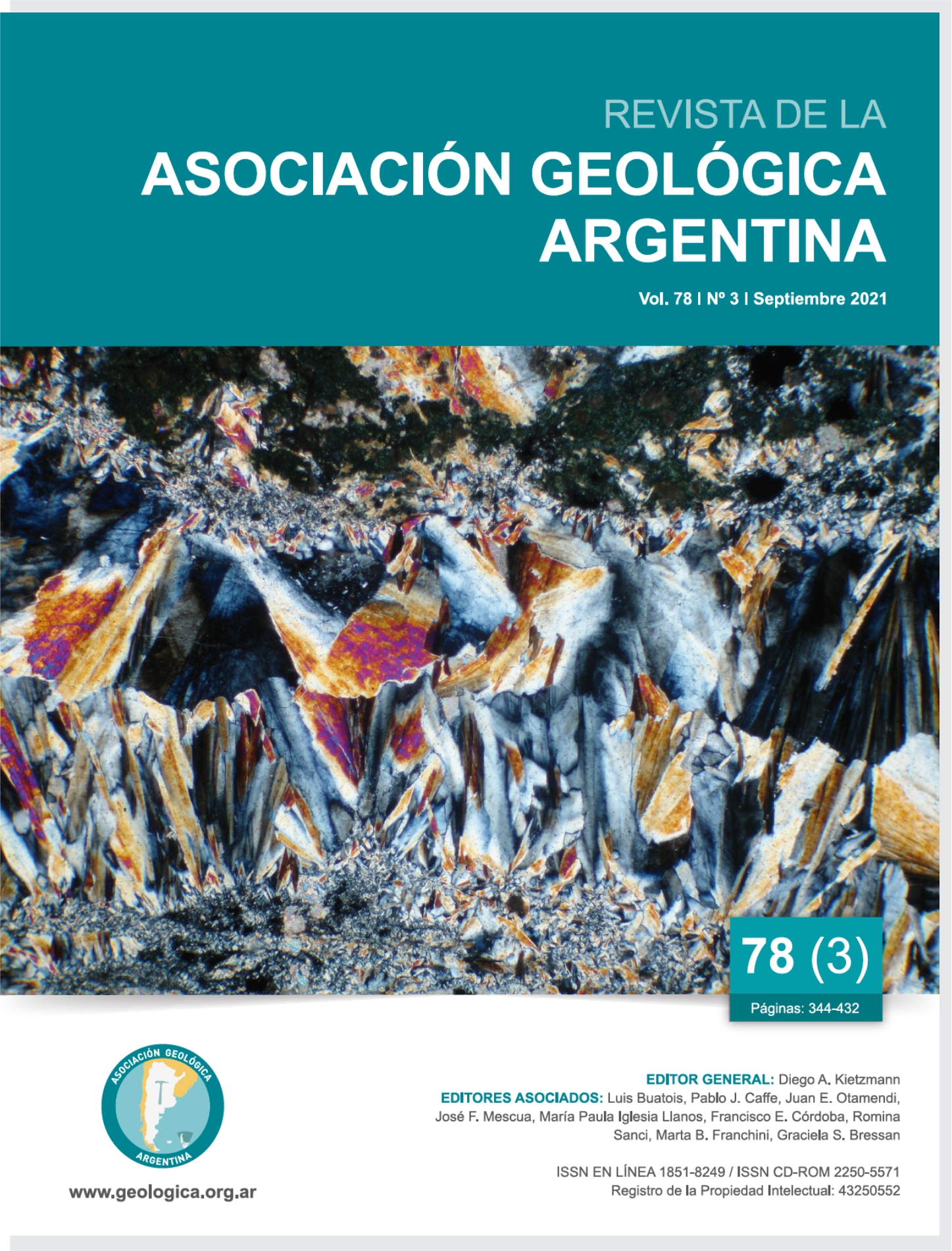Bobierrite and zodacite from La Empleada and San Luis II pegmatites, San Luis, Argentina
Main Article Content
Abstract
Bobierrite and zodacite were found in La Empleada and San Luis II pegmatites, Totoral pegmatitic field, in the southern region of the San Luis range. Bobierrite is transparent, clear blue, brittle, with vitreous luster and white streak, and has a perfect cleavage on {010}; it forms subhedral to euhedral prismatic crystals ~ 1.5 x 0.5 mm, elongated along [001] and flattened on {010}, in the inner zone of La Empleada Be-bearing pegmatite, associated with relic exsolutions of zavalíaite within lithiophilite, reddingite and fluorapatite. Zodacite occurs as aggregates of subparallel to radiating yellow prismatic euhedral crystals up to 2 mm long in a hydrothermally reworked lithiophilite nodule in association with ferrisicklerite, mitridatite, strunzite, bermanite, dufrénite, hureaulite, fluorapatite and cryptomelane in the San Luis II Li-bearing pegmatite. Bobierrite is monoclinic, C2/c; a 4.668(1), b 27.858(2), c 10.052(3)Å, β 104.92(2)º, V 1263.01(4)Å3, biaxial (+), with α 1.509, β 1.511, γ 1.540, δ 0.031 and 2Vγ 72º; its empirical formula is (Mg2.90Fe2+0.11Ca0.06)∑3.08(PO4)1.96∙8.02H2O. Zodacite is monoclinic, C2/c; a 10.145(3), b 24.149(4), c 6.287(3)Å, β 91.25(8)°, V 1539.88(9)Å3, biaxial (-), with 2Vα ~ 65º and α 1.596, β 1.600, γ 1.601; its empirical formula is Ca3.93(Mn2+0.83,Mg0.10)∑0.93(Fe3+3.10,Al1.25)∑4.35(PO4)5.83(OH)3.89∙12.08H2O. Bobierrite and zodacite are considered to have been formed by hydrothermal replacement of primary lithiophilite and are among the last minerals to form.
Article Details

This work is licensed under a Creative Commons Attribution-NonCommercial 4.0 International License.
Nota de copyright
Los autores conservan los derechos de autor y garantizan a la revista el derecho de ser la primera publicación del trabajo licenciado según una licencia de atribución Creative Commons que permite a otros compartir el trabajo con el reconocimiento de la autoría y de la publicación en la que se publicó por primera vez.
Declaración de privacidad
Los nombres y direcciones de correo electrónico introducidos en esta revista se usarán exclusivamente para los fines declarados por esta revista y no estarán disponibles para ningún otro propósito u otra persona.

